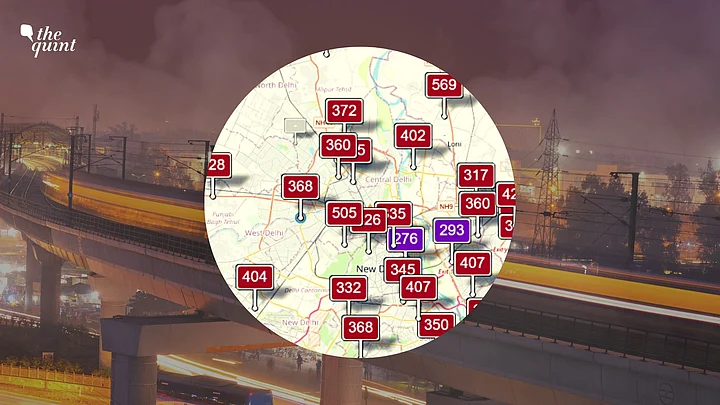Delhi woke up to a murky morning pervaded by smog on Friday, 5 November, a day after the national capital celebrated Diwali with full blast. The acrid haze intensified in the wee hours of Friday, as Delhi witnessed the bursting of crackers during the festival despite government guidelines.
Meanwhile Delhi’s environment minister Gopal Rai has pinned the blame on farm fires and firecrackers, and has hit out at the BJP for allegedly making people burst firecrackers on Diwali.
“A large number of people did not burst firecrackers. I thank them all. But some people burst firecrackers on purpose. The BJP made them do it.”Delhi’s environment minister Gopal Rai, according to TOI
He also told reporters that the number of farm fires has gone up to 3,500, and the impact of the same is visible in the national capital.
According to data provided by the Central Pollution Control Board (CPCB), the Air Quality Index (AQI) of a majority of the regions in Delhi lay in the 'severe' category.
Here is the AQI of some of the areas in Delhi as of Friday morning:
Punjabi Bagh – 473 (severe)
Dwarka Sector 8 – 469 (severe)
RK Puram – 388 (very poor)
North Campus – 445 (severe)
Lodhi Road – 453 (severe)
Jawaharlal Nehru Stadium – 458 (severe)
"The overall air quality of Delhi is plunged into the upper end of very poor category... It will continue to fall now and may enter at the edge of the "very poor" to "severe" category by tonight," the System of Air Quality and Weather Forecasting and Research (SAFAR) stated, news agency ANI reported.
The government agency further indicated that the AQI levels will improve after Sunday evening.
"Overall air quality in 'severe' category today after bursting for firecrackers on Diwali and presence of bio-mass pollutants in Delhi. The air quality & fog condition to improve once windspeed picks up. No wind & high moisture is causing fog conditions," India Meteorological Department's RK Jenamani was quoted as saying by ANI.
According to health experts, the AQIs of such levels can cause respiratory problems even in healthy people, and would have serious health impacts on people with lung or heart diseases.
'Pollution Has Huge Effect on Respiratory Health': AIIMS Director Advocates Use of Masks
Pointing out that "pollution has a huge effect on respiratory health especially on people with lung diseases and asthma as their disease worsens," Dr Randeep Guleria, according to ANI, said:
"Pollution can also lead to more severe cases of COVID. Should wear mask as it'll help in protection from both COVID and pollution."
The air pollution levels in Delhi had been climbing steadily even before crackers were lit on Thursday evening.
At 4 pm and 5 pm on 3 November, Chhoti Diwali
On the evening of Chhoti (Little) Diwali, pollution levels mostly ranged between 'unhealthy' and 'very unhealthy', with the AQIs largely between 150 and 300.
At 2 am on 4 November, Chhoti Diwali
By late night on Chhoti Diwali, pollution levels were rising significantly - with several places in the NCR seeing AQIs of more than 300, and some crossing 400.
At 5 pm on 4 November, Diwali
The data collected by the CPCB at 1 pm showed that five areas in Delhi and two in Ghaziabad recorded AQIs of over 400, with Wazirpur (433), Alipur (406), Bawana (402), Jahangiri (439), and Nehru Nagar (413) in Delhi, Loni (450) and Sanjay Nagar (404) in Ghaziabad, and Sector 62 (420) in Noida among those in the last category of the index.
By 5 pm, it was only getting worse.
(With inputs from ANI.)
(At The Quint, we question everything. Play an active role in shaping our journalism by becoming a member today.)
